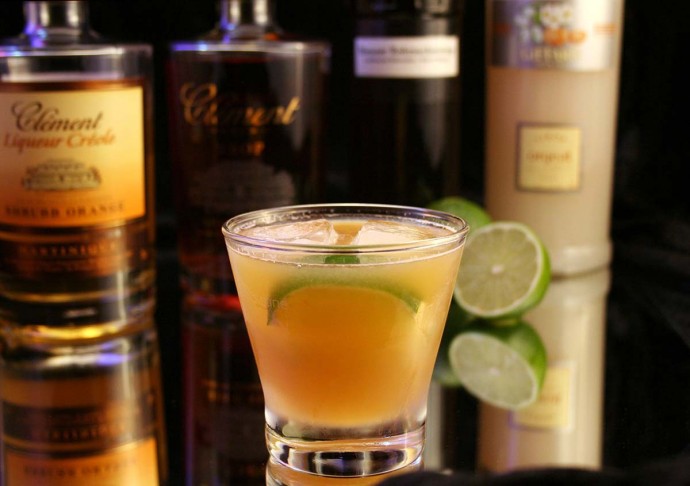The Mai Tai might be one of the more contentious recipes in cocktail history, which is fairly ironic given that it’s a staple of laid-back beach culture. But leave it to the self-proclaimed kings of leisure, Trader Vic and Don the Beachcomber, to playfully duke it out for nearly a half-century over who, exactly, invented the classic tiki drink.
Beyond simple bragging rights, though, the actual recipes the two came up with are fairly different. Trader Vic’s seems to have won out in terms of popularity, so that’s the one we’re going with today, with the caveat that there are probably hundreds of variations that have popped up over the decades.
The Glass
Over the course of whatever tropical journeys you’ve made in your life (whether they involved any significant travel, or just a quick stumble down to the local tiki bar), you’ve probaby seen Mai Tais served in all kinds of bizarre glassware—hurricane glasses, novelty ceramic highballs made to look like Pacific island totems, and giant punch bowls with flaming overproof rum in the middle are the first that come to mind.
Lucky for us, the original, authentic Trader Vic’s Mai Tai calls for a simple Old-Fashioned or rocks glass. You can spice it up with a fancy container if you want, but why gild the lily? When done right, this is a classy-looking cocktail all by itself.
The Rum
When Trader Vic first came up with his Mai Tai, he did so in part to show off the flavor of his prized 17-year-old J. Wray Nephew rum from Jamaica. It was something to behold, we’re sure, but unfortunately it’s no longer something you can get your hands on commercially (or at all, really).
Instead, another well-aged Jamaican rum should do the trick. You may have your personal favorite, but our go-to has generally been Appleton Estate’s Rare Blend. It’s not cheap, coming in at around $30 a bottle, but it’s certainly not one of those rums that’s so pricey you’ll be uncomfortable mixing it in a cocktail. For a few dollars more, their 12-year blend is also a great choice.
The Curaçao
It can be confusing when recipes call for orange curaçao and triple sec more or less interchangeably, as both are orange liqueurs that are used in a wide range of cocktail recipes. They’re not quite the same, though—to start, curaçao is a Dutch invention, while triple sec is French (and don’t you dare forget it…).
If you can get your hands on a bottle of authentic orange curaçao, absolutely go ahead and use it in your Mai Tai. If not, Grand Marnier is made in a similar style (though some think it’s a bit heavy), and Cointreau or some other triple sec will do in a pinch.
The Orgeat Syrup
Orgeat is probably one of the more misunderstood ingredients in the world of mixology. It’s an almond-based syrup that’s used in dozens of tropical drink recipes, but it can be difficult to find the right kind at a regular grocery or liquor store. We recommend against using the ubiquitous Torino orgeat, as it’s less an authentic orgeat than it is simply an almond-flavored syrup (there’s a difference, we promise).
We put together a guide that shows you how to make your own homemade orgeat syrup, and it’s actually quite a simple process. If you really don’t feel like doing the work, though, Small Hand Foods makes one of the best bottled ones on the market, and you can pick some up for just $12.
The Rock Candy Syrup
Rock candy syrup is really just a cutesy name for a particular kind of simple syrup, specifically one made with a 2:1 ratio of sugar to water. Use our guide to homemade simple syrup (it’s seriously so easy the guide is borderline unnecessary, but that’s never stopped us from babbling on about something) and simply double the amount of sugar in the recipe.
The Lime
It seems like we’ve written a section on “The Lime” in at least half of all the drinks we cover, but that’s because it’s important! Always use freshly-squeezed juice from firm, ripe limes—the bottled stuff from concentrate just isn’t the same. It sounds snobby, we know, but once you try them side by side we guarantee you’ll be a convert.
The Mint
While optional, garnishing your Mai Tai with a sprig of mint gives it an extra little herbal note that ties the whole thing together. Make sure to clap it once or twice between your hands to release the essential oils and allow the aromas to blossom.



